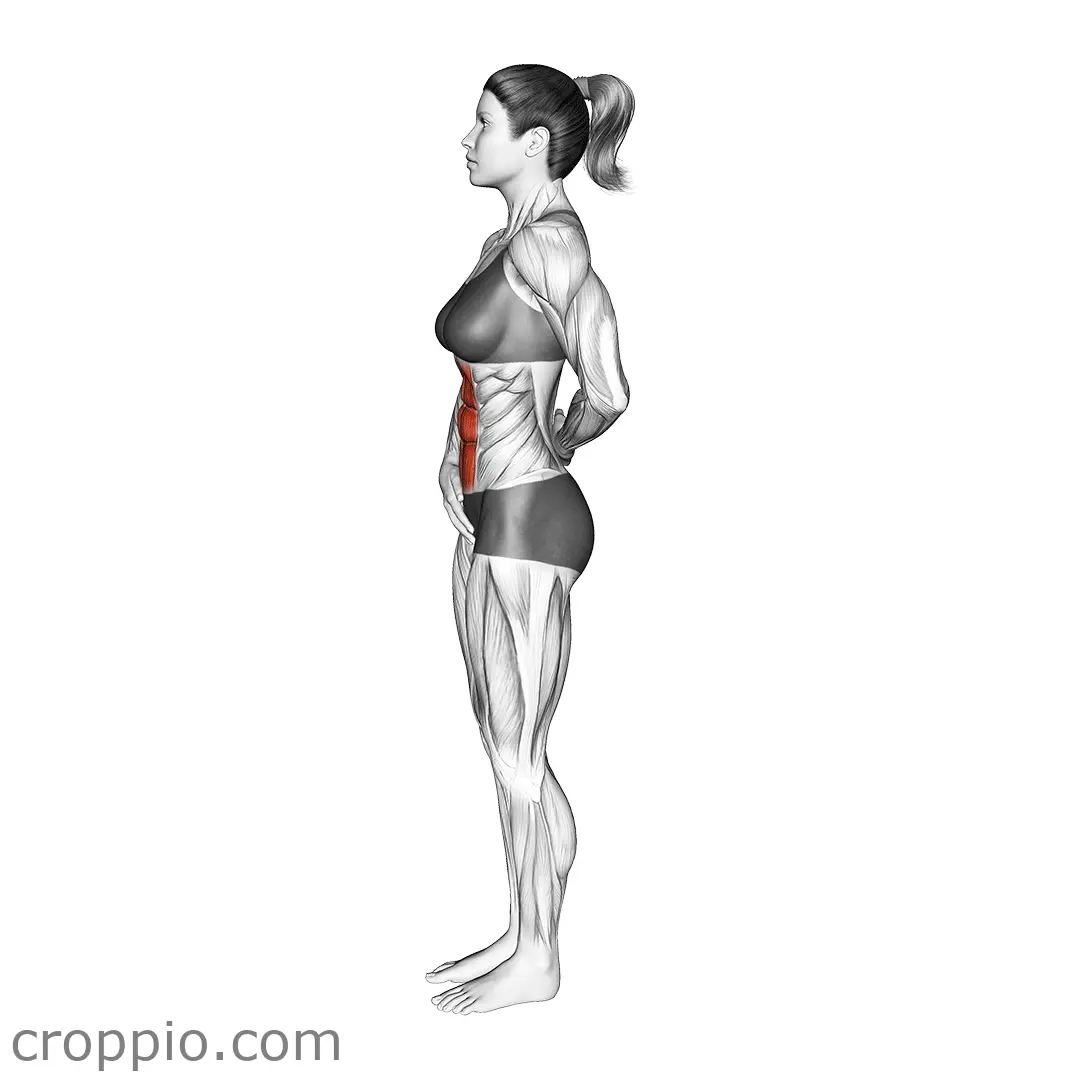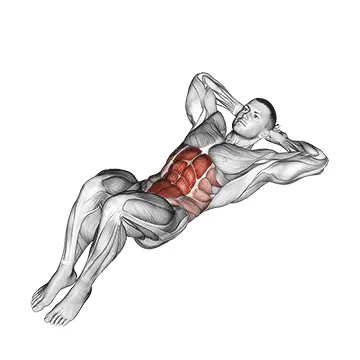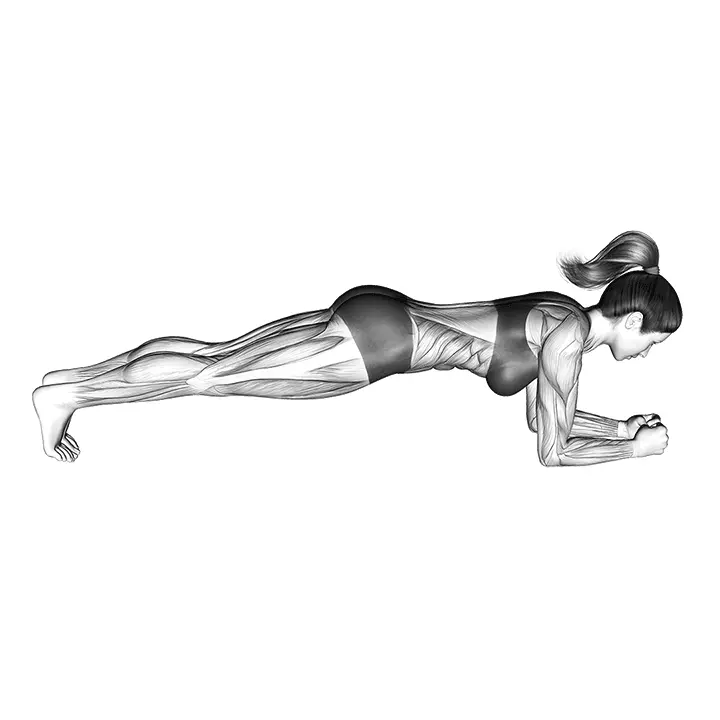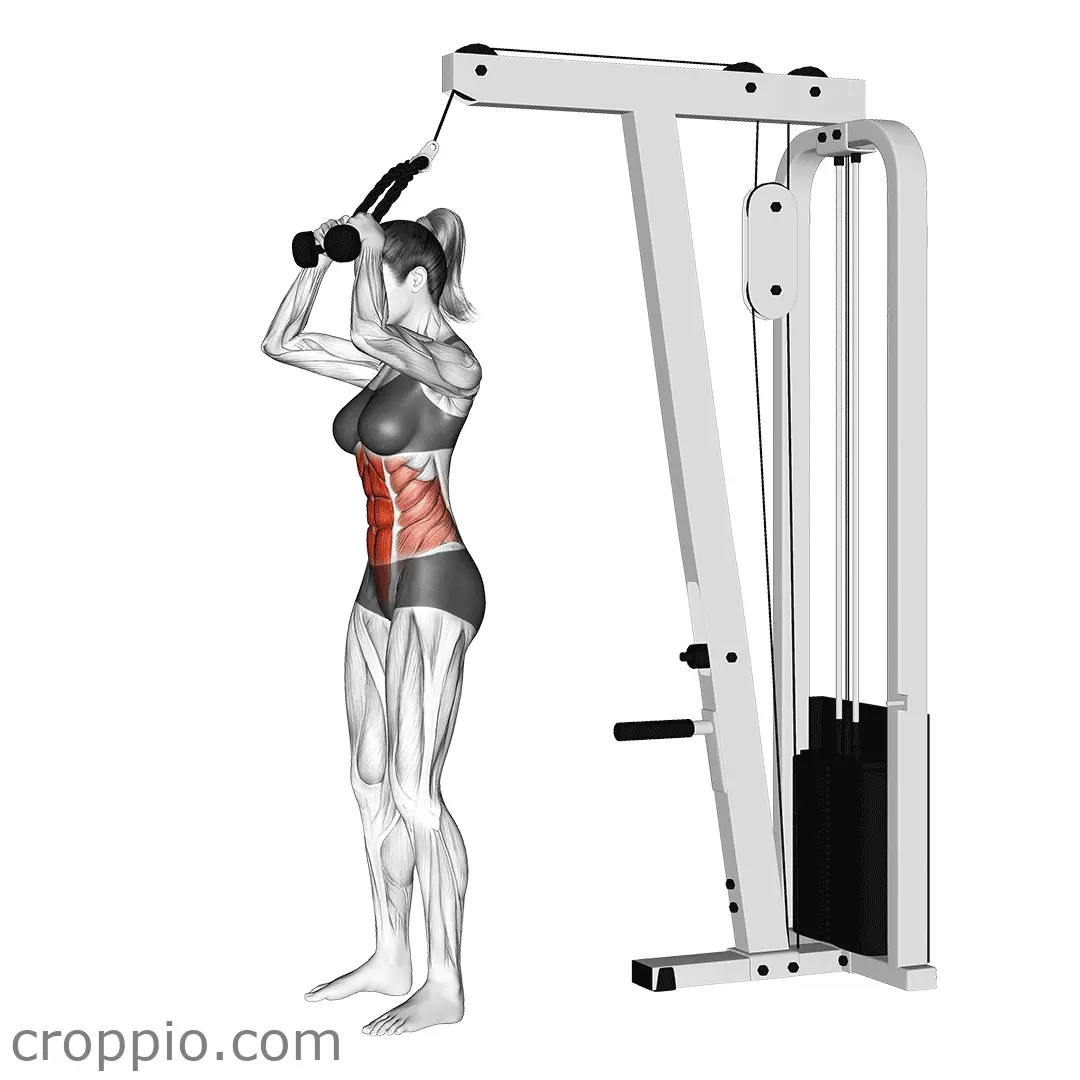Plank

Muscles Involved
The plank is a highly effective isometric exercise that primarily targets the core muscles, including the rectus abdominis (the 'six-pack' muscles), transverse abdominis, and obliques. Additionally, the plank engages secondary muscle groups such as the glutes, shoulders, back, and even the legs. This full-body engagement helps improve overall stability and strength, making the plank an excellent choice for enhancing athletic performance and functional fitness.
Top Mistakes
- Hips Too High or Low: One common mistake is raising the hips too high or letting them sag too low, which can compromise form and reduce effectiveness.
- Poor Shoulder Alignment: Allowing the shoulders to collapse forward or straining them by putting too much weight on them can lead to discomfort and ineffective training.
- Holding Breath: Many people forget to breathe during the plank, which can increase tension and fatigue. Maintaining a steady breath is crucial for endurance.
- Looking Forward: Staring ahead instead of keeping the gazed directed towards the ground can lead to neck strain. A neutral spine is essential for optimal form.
Execution Tips
- Start Position: Begin by lying flat on your stomach, then rise onto your toes and forearms. Align your elbows directly beneath your shoulders.
- Form Check: Your body should form a straight line from your head to your heels. Engage your core by pulling your navel towards your spine.
- Glute Activation: Squeeze your glutes as you hold the position to enhance stability and support your lower back.
- Maintain a Neutral Head Position: Keep your head in line with your spine by looking at a spot on the floor about a foot in front of you.
Workouts
The plank can be easily integrated into any fitness routine. As a beginner, aim to hold the plank for 20-30 seconds, repeating 3 sets. As you progress, increase your hold time to up to 1-2 minutes per set. To challenge yourself further, incorporate variations such as side planks, plank jacks, or plank rotations. Pair these with complementary exercises like push-ups or squats for a balanced workout session that targets multiple muscle groups.
Conclusion
The plank is a fundamental exercise that offers multiple benefits, including improved core strength, enhanced stability, and better posture. By avoiding common mistakes and focusing on proper execution, you can maximize its effectiveness and incorporate it seamlessly into your fitness regimen. Regular practice of planks will not only help in achieving a stronger core but will also promote overall body conditioning, making it a staple exercise for anyone looking to enhance their fitness level.



